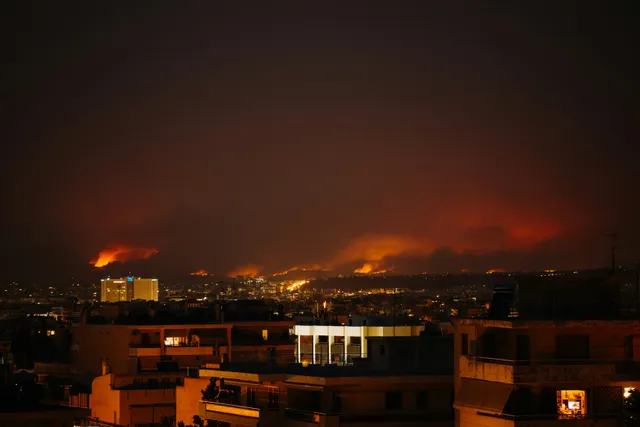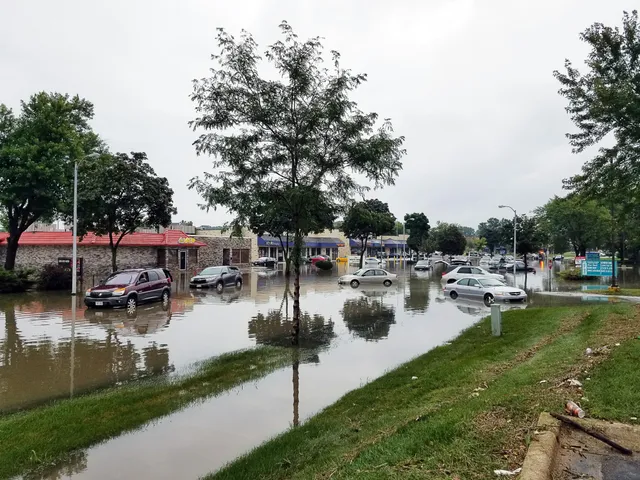After a Car Crash My Work Was Going to Have to Wait.

Daniel Thomas, Unsplash
My car crashed. So my work had to wait. But not for long since I was prepared. But most organizations don't know which of their employees are prepared for disasters, and which aren't. Especially problematic with our 36% hybrid workforce. This is a business continuity gap.
When the car stopped spinning, I was in a ditch. For a moment, everything was silent except for the ticking of the engine and my own heartbeat.
I had just experienced what would technically be classified as a minor car accident, but nothing about it felt minor. My day, my plans, my sense of control, all thrown into chaos. Yet as I sat there, shaken but thankfully unharmed, my mind eventually drifted to work. In a few hours I would have to address the deadlines, meetings, and responsibilities that didn't pause just because my car did. I work from home. My office is wherever I set up my laptop. Getting back to work meant getting back to my house, which is both my shelter and my workplace.
Fortunately, I was prepared. Emergency kit in my trunk. Phone charger. A clear plan for who to call. Because I was ready for the unexpected, I got help quickly, communicated with my team, and returned to work sooner than I thought possible.
But here's what stayed with me: I was one person, one accident, one moment of preparation away from a very different outcome. My home is my office. If I couldn't get home, I couldn't work. If my home loses power, I lose my primary workplace. That reality scales across millions of distributed workers.
Why Employers Should Care About Employee Preparedness
My experience is a small example of a much bigger truth: anything that happens in our personal lives comes to work with us. Whether it's a car accident, a house fire, or surviving a major disaster, employees carry the physical and mental weight of these experiences into the workplace.
The stakes are higher now than ever. With 36% of employees working hybrid or fully remote arrangements, and 60% of remote-capable workers preferring hybrid models, the traditional office-centric approach to business continuity is obsolete. When disaster strikes, your workforce isn't consolidated in a building with clear evacuation procedures. They're distributed across homes, coffee shops, and coworking spaces, each with different risk exposures and preparedness levels.
The question for employers isn't whether these events will happen to your workforce. It's whether your organization is equipped to support employees when they do, and whether your business continuity plans account for both the distributed nature of modern work and the human side of recovery.
The Long Road to Recovery: What the Data Shows
After a natural disaster, employees in affected areas may be out of work for days, weeks, or even months. The timeline depends on severity, personal circumstances, and access to resources. For distributed workforces, this complexity multiplies. A wildfire in California, flooding in Texas, and a hurricane in Florida can impact different segments of your team simultaneously, each requiring different support and recovery timelines.
Cleanup and repairs can last from several weeks to months. Emotional recovery often takes even longer, with stress, anxiety, and grief affecting employees long after physical damage is repaired.
The statistics on workforce recovery are sobering:
- When an employee is out of work for more than six months due to injury or disaster, they have less than a 50% chance of ever returning to work in any capacity.
- Even when a business itself recovers, it can take much longer for employees to heal and regain focus. Hurricane Katrina displaced more than a million people in the Gulf Coast region. Many people returned home within days, but up to 600,000 households were still displaced a month later. At their peak, hurricane evacuee shelters housed 273,000 people and, later, FEMA trailers housed at least 114,000 households.
- Only a third of homes in Paradise, California were rebuilt five years afterthe 2018 Camp Fire.
- Disasters impact workforce productivity broadly. Between 2019 and 2021, the number of people globally citing severe weather events as a cause of serious harm rose from 22% to 27%.
A community will be left with emotional, physical, and financial losses after any disaster. Survivors need access to medical care, shelter, transportation, and behavioral health support before they can return to work effectively. For distributed workforces, the challenge compounds: you cannot simply walk the office floors to assess damage or check on employees. When 36% of remote-capable employees work hybrid arrangements and 11% work fully remote, understanding who is affected, where they are, and what they need requires systems and visibility that most organizations lack.
The Lasting Impact: Scars That Come to Work
Here's the part that most business continuity plans miss: anything that happens in an employee's personal life comes to work with them, including the trauma of living through a disaster.
Survivors may struggle with anxiety, trauma, and ongoing stress. These aren't just personal challenges; they directly affect an employee's ability to perform, engage, and remain in your organization. Employers must recognize that true business continuity isn't just about reopening an office or resuming operations. It's about supporting the people who keep the mission going, wherever they're working from.
When an employee works from home you don't see them struggling. I know. I work from home. You don't know their house flooded. You don't realize they're sitting in their car because they have nowhere else to work from. After my accident, I could have been that person if I hadn't been prepared. The distance that makes hybrid work flexible also makes workforce vulnerability invisible.
How Employers Can Build a Resilient Workforce
Building workforce resilience isn't about adding a single policy or training module. It's about creating a comprehensive support system that acknowledges employees are whole people, not just workers, and that modern work is distributed, not centralized.
Encourage Preparedness Before Disasters Strike: Offer practical training and resources that help employees prepare for emergencies at work and at home. This includes emergency kits, communication plans, and family preparedness resources. Make these resources accessible and normalize the conversation around preparedness. For distributed workforces, this means preparing employees for disasters at their primary work location, not just the office they visit occasionally.
Support Recovery with Flexibility and Resources: Provide flexible schedules, extended leave options, and mental health resources for employees returning after a crisis. Employee Assistance Programs should include trauma-informed counseling. Check-ins should be genuine, not performative. Remember that remote and hybrid employees may need different support than those who come to an office daily.
Recognize the Whole Person: Understand that employees are more than their output. Their well-being outside work directly impacts their performance inside work. Duty of care extends beyond the office walls. It extends to wherever your employees are working from.
Foster a Culture of Empathy and Psychological Safety: Create an environment where employees feel safe sharing their struggles and asking for help without fear of professional consequences. Train managers to recognize the signs of distress and respond with compassion. This is especially critical for remote workers who may hide struggles more easily than those in physical offices.
Invest in Visibility into Workforce Preparedness: Organizations spend millions protecting physical infrastructure: backup generators, fire suppression systems, reinforced buildings, emergency response protocols. But with 36% of employees now working hybrid or fully remote arrangements, a critical blind spot has emerged: visibility into employee disaster preparedness.
You know your data centers have redundancy. You don't know if your remote workforce has flashlights, water, or family communication plans. You have evacuation procedures for office buildings. You have no idea which of your distributed employees know their home evacuation routes. This gap threatens business continuity when disasters strike scattered locations simultaneously.
Platforms like Perci address this by providing workforce resilience intelligence: visibility into preparedness by role and location. The approach treats disaster readiness as an organizational capability rather than hoping individual employees figure it out themselves while relying on government alert systems that repeatedly fail due to human error, insufficient funding, or lack of training. When your workforce is distributed, you need distributed preparedness visibility.
Conclusion
Resilience isn't just about bouncing back from setbacks. It's about being prepared, supported, and understood, no matter where your employees are working from.
Employers who invest in employee resilience aren't just helping their teams recover faster. They're building stronger, more adaptable organizations. By caring about preparedness and recovery across distributed workforces, employers can make a real difference in the lives of their people and in the long-term success of their business.
As for me and that terrible day? I thanked the tow truck driver who extracted my car, holding back tears. Because he did his job, I was going to get back to mine. But not every employee has that same safety net. The question is: what are you doing to provide it, especially when you can't see them struggling?
About the Author: Ashley Harrigan is a nationally recognized policy strategist and operations leader with over 15 years of experience driving climate resilience, infrastructure protection, and strategic communications across federal agencies. As a Strategic & Operational Resilience Solutions Specialist at GFT, she leads efforts to strengthen security and resilience services for critical infrastructure. She is the founder and director of Fair Wins Resilience and co-hosts the podcast Road to Resilience.
Related articles
Get regular updates in your inbox
We will email you the new blog posts. Typically 3-4 times a month.



